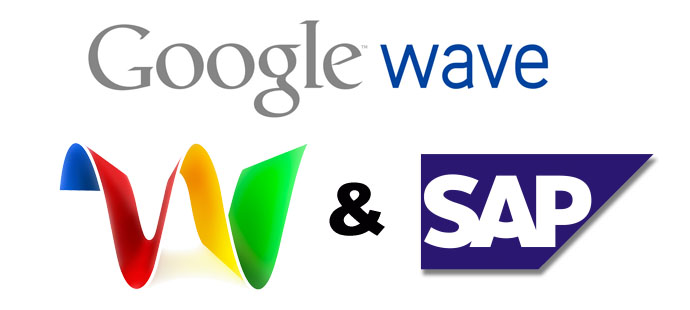
Now that the Google Wave “sandbox” environment is widely available (see Starting with Google Wave if you need more background information), we’re starting to see some great examples of integrations between Google Wave and SAP systems.
DJ Adams’ great post on SDN shows how he built a robot to intercept SAP-specific references in a Google Wave conversation, and use that information to automatically augment the conversation. In this case, the robot automatically adds longer descriptions to standard SAP request codes.
Daniel Graversen shows how a Google robot can be used to get more information about a particular customer using SAP enterprise services:
And he shows how a bank-loan-application robot can use a form in the Google conversation to create a basic workflow that could then be linked to standard SAP enterprise services.
These examples are fairly rudimentary, but it’s easy to see how these could be augmented with other powerful technology, such as text analytics to get deeper understanding of the Google conversation, integration with metadata repositories to spot key terms like “revenue” or “sales”, and graphics and analytics engines to provide actionable information.
To get an idea of how far this technology can go in the future, take a look at the Text-to-Query prototype Powerpoint add-in from the SAP BusinessObjects innovation center.

The prototype uses text analytics to interpret what you are writing in a slide, and then “automagically” propose appropriate charts and graphs, based on the metadata already stored in your BI systems. It’s easy to imaging extending this to Google Wave and other conversation environments such as Twitter, Facebook, and internal Enterprise 2.0 systems.
These are all examples of elements that will provide a platform for future “business user applications.” These flexible applications will be created by business people in the course of their daily work, applying the vast amounts of information and metadata stored in corporate systems to provide contextual information without the user having to go to explicitly search for it. Today, over 90% of the effort to create new information-focused applications goes to aligning the right data, with the required quality, and storing it appropriately.
By tying together conversations, context, information, and operational systems, we’re getting closer to the goals of the semantically-enabled “Web 3.0”, where diverse pieces of information can be integrated together (and acted upon) with less painful effort.

Comments
6 responses to “Integrating SAP and Google Wave, And The Context-Based Future of Business User Applications”
[…] Data from SAP systems can be used to augment conversations on platforms such as Google Wave. […]
[…] of data onAugmented conversations with Googlewave Gravity […]
[…] Short Description: A robot which integrates with the SAP Enterprise Services. The robot can guide in the creation of a equipment Service request. A better description by Timo Elliott can be found here. […]
Awesome!, SAP and Google Wave works together, i can´t wait to get my invitation =D.
[…] can be integrated together (and acted upon) with less painful effort. (Cross-posted @ SAP Web 2.0) Posted Under : Enterprise Tags google sap e20 business objects business user applications […]
Hi Timo,
Great post. I have not seen the powerpoint example but it could look nice as well in a wave.
/daniel